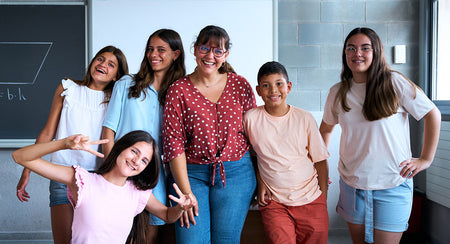The 5 Ingredient Recipe for Student Success
As we turn the page to a new month and calendar year, now is a good time to step back and consider what lies ahead and what we want our students to achieve. How can we have the greatest impact on learning? Where might we make some changes? What holds the greatest potential to lift the learning performance of our students?
Of course, there are many options and possibilities to consider. However, there is a relatively short list of high impact actions we can take that can make an outsized difference. In fact, just five key elements can combine to accelerate student learning, build higher levels of achievement, and make learning more meaningful.
The good news is that each of these elements are within our control. But they need to become part of our relationship and engagement with students every day. We might think of these five elements as ingredients in a recipe for success in the second half of the year— and beyond.
Confidence in student potential
Students rarely perform at levels beyond what we believe they can. Students feel when we think that they can do better than they show and are quick to sense when we believe that they lack the potential to succeed. What we believe about our students matters—a lot. Multiple studies have shown that what teachers believe about the potential of their students can be a major predictor of their achievement. Now is a good time to revisit what we believe about our students’ potential for success and build our confidence on their behalf.
High expectations
Students typically rise to the level of our expectations. When we hold high expectations, students are more likely to strive to meet them. High expectations are a powerful way to communicate to students that we believe in their potential. On the other hand, having low expectations almost always results in low achievement. It is a message to students that we do not believe in their potential. Having high expectations that students may not quite meet is far preferable than low expectations that students can easily satisfy.
Timely support
Our belief in the potential of our students and holding high expectations for their learning are heavily dependent on students experiencing timely, useful support. Telling students that we believe in their potential and have high expectations holds little meaning and value if we are not present and ready to guide, coach, nudge, intervene, and teach when they need it.
Relevant and purposeful learning
Confidence, expectations, and support have the greatest impact when what we ask students to learn seems relevant to their lives and purposeful enough to invest their time and energy. Of course, not everything we ask students to learn may seem immediately relevant or serve a purpose that is obvious to them. However, when we help students to see connections to what they already know and point out life applications where they exist, we can build credibility to carry through when connections and relevance are less immediate. Meanwhile, we can coach students to set and track learning goals. The presence of meaningful goals and the ability to see progress often can be a useful substitute for immediate life relevance.
Safe space to take learning risks
Learning that is challenging and worthwhile almost always involves mistakes and errors. We can encourage students to press at the edges of what they know and feel safe that making mistakes while learning will be accepted—even celebrated as evidence of new and challenging learning efforts. We also can encourage students to use what they learn to explore new questions and discover new learning on their own. The autonomy to explore new learning without fear of embarrassment and criticism when they fail can be a powerful learning motivator.
Of course, the impact of these elements is even greater when we form strong, positive relationships with our students, help them feel as though they fit in and belong, and they are valued beyond the grades and test scores they achieve.















